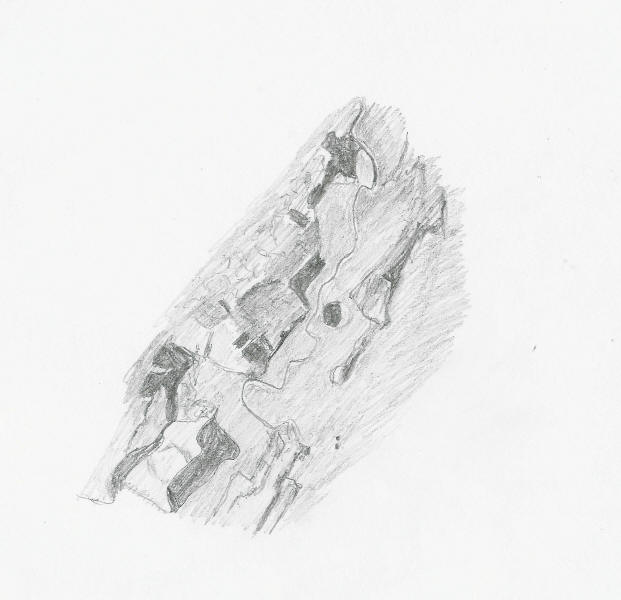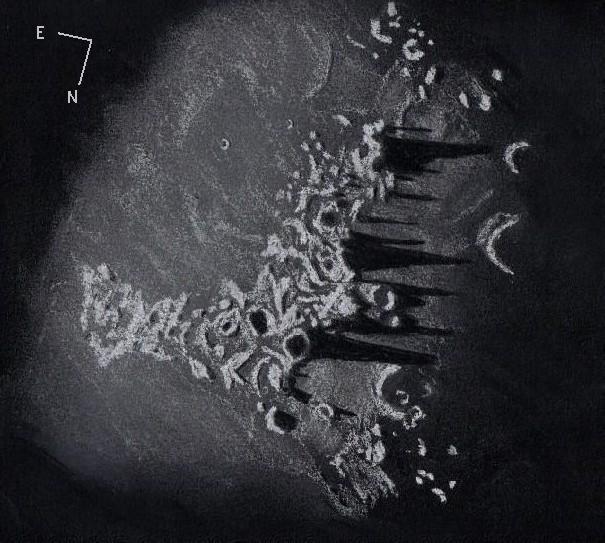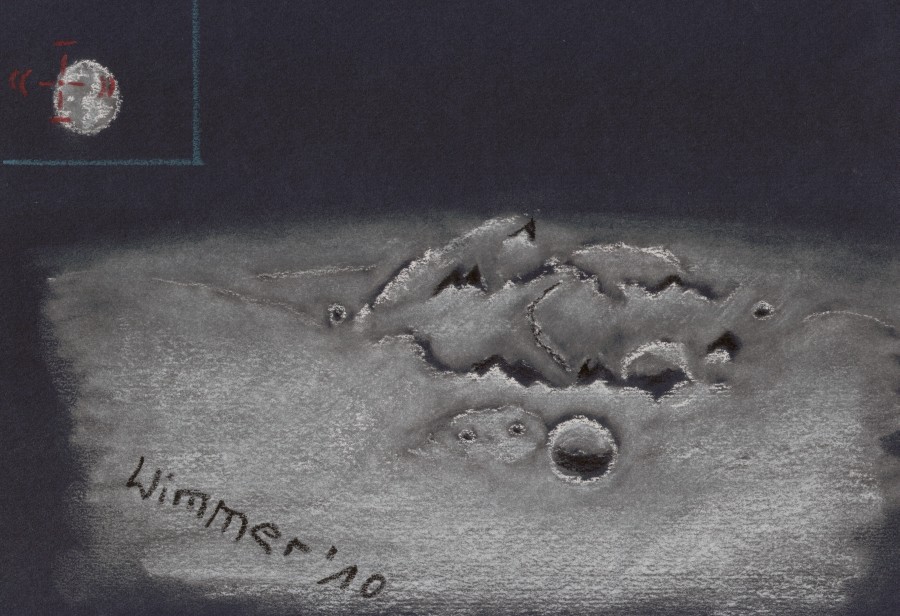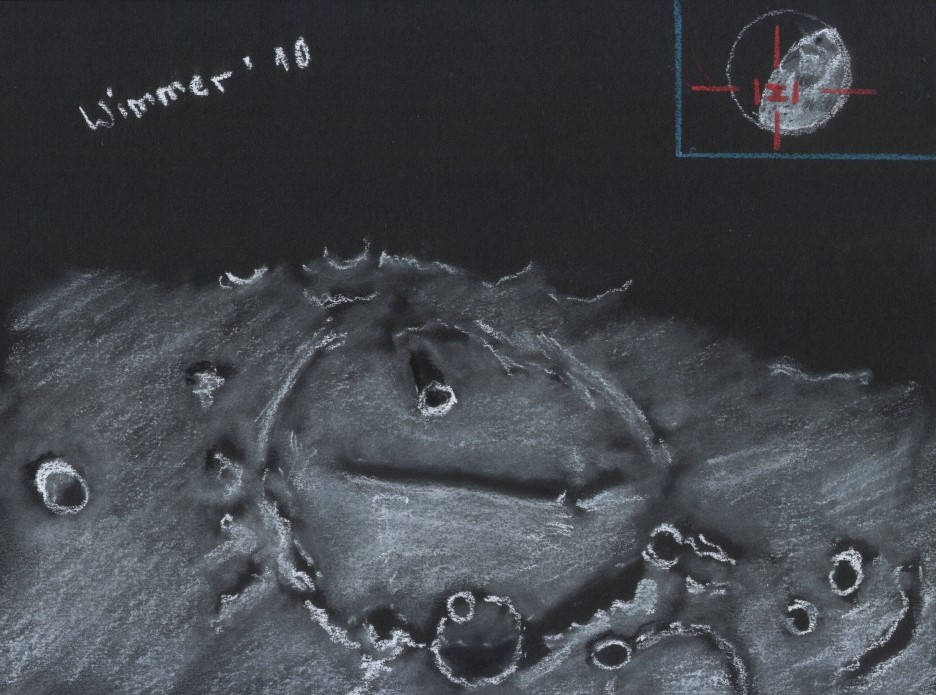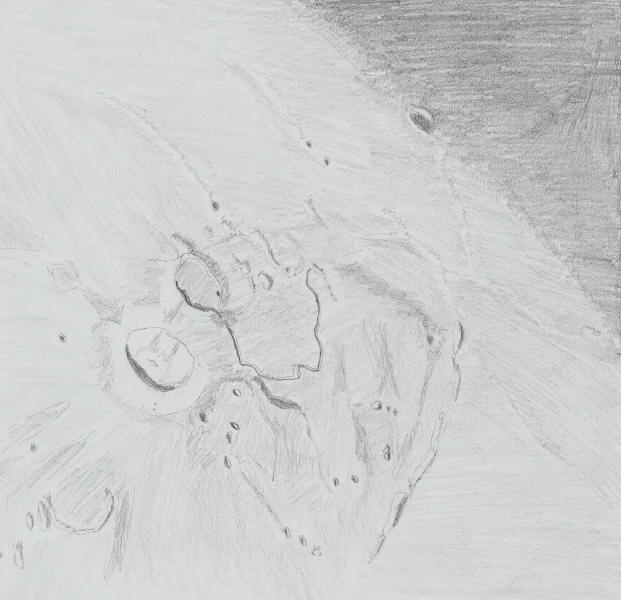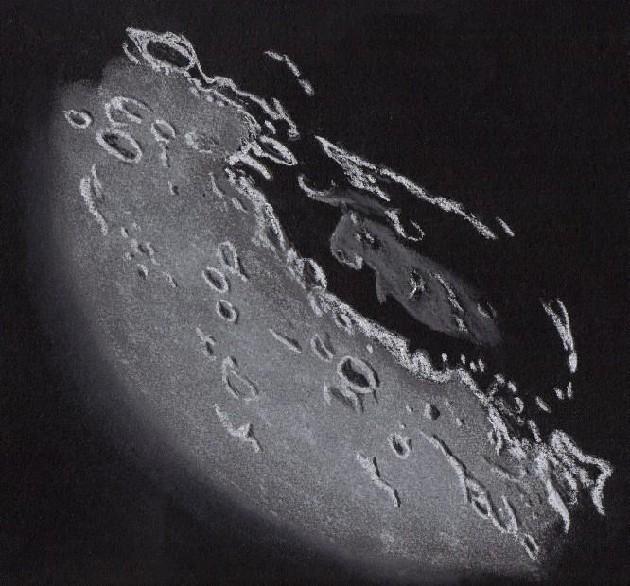Hadley Rille and Surroundings
By Peter Mayhew
For a lunar observer, seeking out the Apollo landing sites is an inevitable pilgrimage. The easiest, and most rewarding, site to locate is the Apollo 15 site at Hadley Rille on the edge of the Apennine mountains.
On the evening of 22nd April, the sky suddenly cleared just as I was about ready for bed, so I changed plans and took out the scope for a gaze at a crystal clear day 8 moon. Seeing was excellent, and lighting conditions were just right for picking out the Apollo 15 site features.
I tried hard to locate St George crater, which is on the tip of Mons Hadley Delta, was one of the Apollo 15 sampling site targets, and is visible in a small telescope, but I only got unsure brief suggestions of it; perhaps the sun angle wasn’t quite right for this. However I could see the rille itself easily, and several mountains and hills photographed by Scott and Irwin from the lunar surface, as well as Silver Spur, on the flank of Hadley Delta. The “x” marks the landing site.
For comparison, here are some links to photographs of these features taken from the surface.
Landing site panorama. Here Mons Hadley is on the left and Hadley Delta just right of centre.
Object name: Hadley Rille, Mons Hadley, Mons Hadley Delta, Hadley C, Apollo 15 landing site.
Object type: Lunar rille, lunar crater, lunar mountains
Location: York, UK
Date: 22nd April 2010
Media: graphite pencil on white paper
Instrument: Skywatcher Skyliner 152mm f8 Dobsonian with 10mm e.p. and x2 Barlow.
